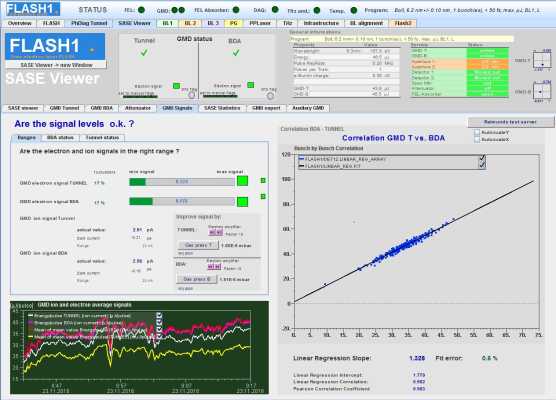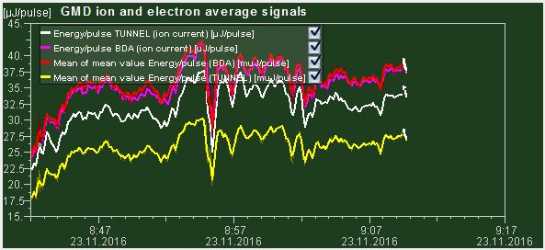Calibrating the pulse resolved (electron) data from GMD
General comments
The GMD measures the XUV pulse energy in 2 different ways. firstly the ion current is measured and (by hardware) averaged over several seconds. This result is recorded as "average pulse energy" for the Tunnel and the BDA. These values are calibrated together with the PDB and are given in µJ. They can be used to calibrate the pulse resolved data.
The pulse resolved data for the pulse energy (electron signals) are per se not calibrated. The values are however typically close to the µJ (Fini adjusts the calibration from time to time). To compare the pulse resolved data with the calibrated averaged one one has to average the pulse resolved data over several seconds (for the exact averaging look below). Comparing the "average pulse energy" from the ion current and the averaged pulseresolved one , one can determine the correction factor needed for the puls resolved electron data.
Looking at the actual values
The "averaged pulse energy" (ions) and the averaged pulse resolved data (electrons) can be online seen in doocs in the GMD viewer

Here a close up. For the current settings the BDA values agree well while for the tunnel there is a certain discrepancy which has to be corrected if using the pulse resolved data for the analysis

Finis Calibrator
The correct averaging of the electron data is not simpel ( sliding average, retardation effects ..). Fini wrote a program which takes all effects into account and can be used offline to determine the calibration constants. The program can be downloaded from the list below

Example from DAQ (. h5 files)
